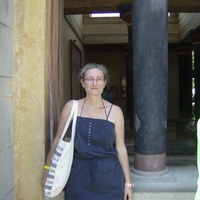This paper presents the preliminary results of studies on Knidian amphorae found in archaeological contexts during the excavations conducted at Burgaz during 1993-2017. It focuses on analysis of the characteristics and types of Knidian... more
This paper presents the preliminary results of studies on Knidian amphorae found in archaeological contexts during the excavations conducted at Burgaz during 1993-2017. It focuses on analysis of the characteristics and types of Knidian amphorae at Burgaz, presenting amphora types that were produced on the Knidian peninsula and found in two particular sectors excavated at Burgaz.
Research Interests:
This paper presents the preliminary results of studies on Knidian amphorae found in archaeological contexts during the excavations conducted at Burgaz between 1993 and 2017 by Middle East Tecnical Univeristy’s (METU) Centre of Research... more
This paper presents the preliminary results of studies on Knidian amphorae
found in archaeological contexts during the excavations conducted
at Burgaz between 1993 and 2017 by Middle East Tecnical Univeristy’s
(METU) Centre of Research and Assessment for the Historic
Environment (TAÇDAM). It focuses on analysis of the characteristics
and types of Knidian amphorae at Burgaz, presenting amphora types
that were produced on the Knidian peninsula and found in two particular
sectors excavated at Burgaz.
found in archaeological contexts during the excavations conducted
at Burgaz between 1993 and 2017 by Middle East Tecnical Univeristy’s
(METU) Centre of Research and Assessment for the Historic
Environment (TAÇDAM). It focuses on analysis of the characteristics
and types of Knidian amphorae at Burgaz, presenting amphora types
that were produced on the Knidian peninsula and found in two particular
sectors excavated at Burgaz.
The mortaria recovered from the excavations carried out at Burgaz began to appear with examples largely of imported Corintian mortaria in the 7th century BC, but soon afterwards in the 6th century BC the production of local imitations... more
The mortaria recovered from the excavations carried out at Burgaz began to appear with examples largely of imported Corintian mortaria in the 7th century BC, but soon afterwards in the 6th century BC the production of local imitations commenced. Knidian local types were commonly used until the end of the 4th century BC. The mortaria recovered at Reşadiye however indicate that diffent Knidian types, representing the tastes of the Hellenistic period, were produced there.
